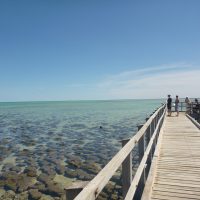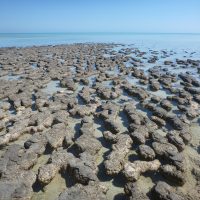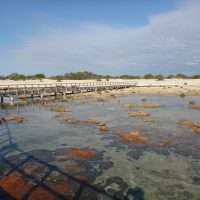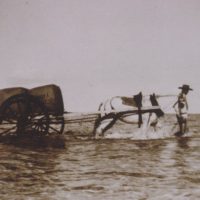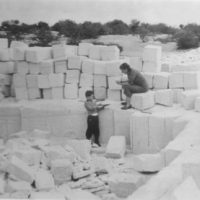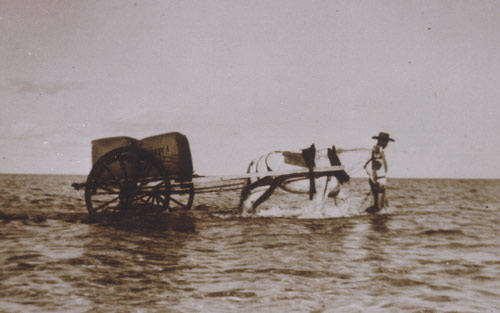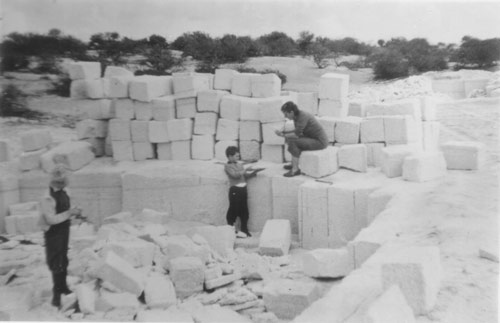Hamelin Pool
Hamelin Pool is home to the most diverse and abundant examples of stromatolites in the world. Also referred to as ‘living fossils’, stromatolites are living representatives of life over 3500 million years ago when there was no other complex life on Earth.
A 200m boardwalk at Hamelin Pool provides excellent views of the stromatolites, microbialites and microbial mats. Please help protect these structures by staying on the boardwalk.
Nearby is the Old Hamelin Pool Telegraph Station which was built in 1884 as part of the communication line between Perth and Roebourne. The original building is now a museum housing many artefacts.
Access
Hamelin Pool is accessed from the Shark Bay Road 27km from the North West Coastal Highway. The road is sealed apart from a short unsealed two-wheel drive section to the carpark. It is an easy 750 metre return walk between the carpark and stromatolites.
The 1800 metre Boolagoorda loop trail goes through the old coquina quarry and telegraph station. You can also drive to the telegraph station which also has a commercial campground and tea rooms and offers tours of the telegraph station museum.
The microbial mats and stromatolites of Hamelin Pool are among the most diverse in the world and show what marine ecosystems would have looked like three billion years ago. Life in Hamelin Pool is therefore among the reasons for Shark Bay’s World Heritage status.
For a long time scientists knew that microbial mats influenced the evolution of life on Earth, but they have learnt much more in recent years. They have found that microbial mats are diverse and complex ecosystems where different species work together in communities that depend on each other.
Find out more about these communities on Hamelin Pool’s interpretive signs (8MB).
The Hamelin Pool Telegraph Station was built in 1884. An important link in the telegraph line between Perth and Roebourne it was originally named the Flint Cliff Telegraph Station after a local landmark. The station played a vital role in Western Australia’s communication system until the public telex system spelled its demise in the late 1950’s.
Also known as Flagpole Landing in the early 1900’s, Hamelin Pool was the landing point for cargo vessels bringing supplies to, and shipping wool from, surrounding stations when there were no roads. Wool was hauled by horse and cart to small vessels close to shore for transport to larger vessels in deeper water.
Shark Bay is home to a tiny cockle, Fragum erugatum, so prolific in Hamelin Pool and L’haridon Bight that in some places they have compacted and cemented into solid masses known as coquina.
A number of buildings in Shark Bay were built from blocks cut out of the coquina and you can see one of the quarry sites along the Boolagoorda trail. When in Denham take a close look at the Old Pearler Restaurant, St Andrew’s Church, and parts of the Shark Bay Hotel.


